My Review of the New LAX/Metro Transit Center
There was a lot of hype around LA's new Transit Center from the airport, but just landing from East Asia I was mostly underwhelmed in comparison.
The LAX/Metro Transit Center opened this summer on June 6, 2025. There was a lot of fanfare over this new transportation hub. Perhaps you saw the buzz: “A trip to LAX without a car?,” “You no longer need a car to get to LAX,” or “Goodbye, LAX horseshoe.”
I was excited myself! “We are finally becoming a real city. I hope to test it on my way back from Asia,” I wrote in a past post. I decided to keep my word. When I touched down from Japan at LAX, I used the New LAX/Metro Transit Center. Being in East Asia for a month prior certainly colored my expectations of the infrastructure I found back home.
Did Los Angeles become a real city like I was hoping? This is my review of the new LAX/Metro Transit Center and my journey home from the airport.
TL;DR:
Does not fix infamous LAX Horseshoe of Death now.
People Mover system is not operational yet.
New Transit Center is fine, but not a cathedral.
Train service is ok, but no direct route to Union Station/ DTLA.
Can’t fix Southern California suburban sprawl alone.
Baby step, but this baby is a 40-year-old man.
Grade: Incomplete
Advisement: Re-grade when People Mover is done.
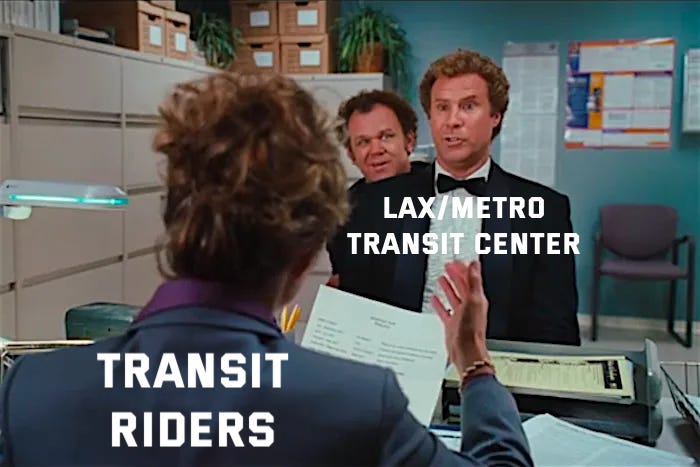
LAX Horseshoe of Death
Friends don’t let friends drive to LAX. -Ryan M. Allen
First off, it is truly miserable driving to LAX. No matter the time, it seems like traffic is backed up to the highway from all directions. I will say I have taken some Ubers where the drivers seem to have some little shortcuts that can speed up the trips to a degree, but traffic always remains.
The worst part is that once you get into LAX, drivers are faced with the dreaded Horseshoe of Death. It is a U-shaped road to drop off flyers for their terminal. It is a funnel for all the cars into a tiny space. Even the FlyAway Bus option ends up trapped in this Horseshoe cone of traffic.
The problem with the current LAX/Metro Transit Center is that it still does not solve the Horseshoe issue. The Center itself is a few miles away from the airport. While there is a planned People Mover system, it is not yet open. This means everyone is still stuck on a bus, stuck in traffic with all the other cars.
I did wonder why the new Center wasn’t closer. The answer is apparently parking and cars (of course). “Airport officials were reportedly concerned over potential lost parking profits if travelers had a Metro option,” according to an LA Times report.
The same report said the Federal Aviation Administration was also concerned about interfering with "antenna systems and obstruction of airplanes’ line of sight,” which was mostly a bogus reason and easily fixable.
These, and other constituent complaints, led to LAX never quite getting a direct rail route. It has been annoying to get to the airport ever since, and has only been getting worse. But the new Transit Center is supposed to fix all this. I am sorry to say, it does not. It is still as annoying as ever.
When the People Mover is done, I will have to totally re-evaluate the entire experience. Until then, the transit riders of LA are still stuck in traffic like they have been for so long. It is anti-promotion of public transportation.
Arriving LAX/Metro Transit Station Itself
The trip from the airport terminal to the station on the Metro Connector bus was roughly 20 minutes or so (running every 10 minutes). It seemed slightly longer than expected, as I was more thinking the bus ride would be similar to the LAX-it shuttle that takes ride-sharing passengers to a little parking lot. It is further off-site than that.
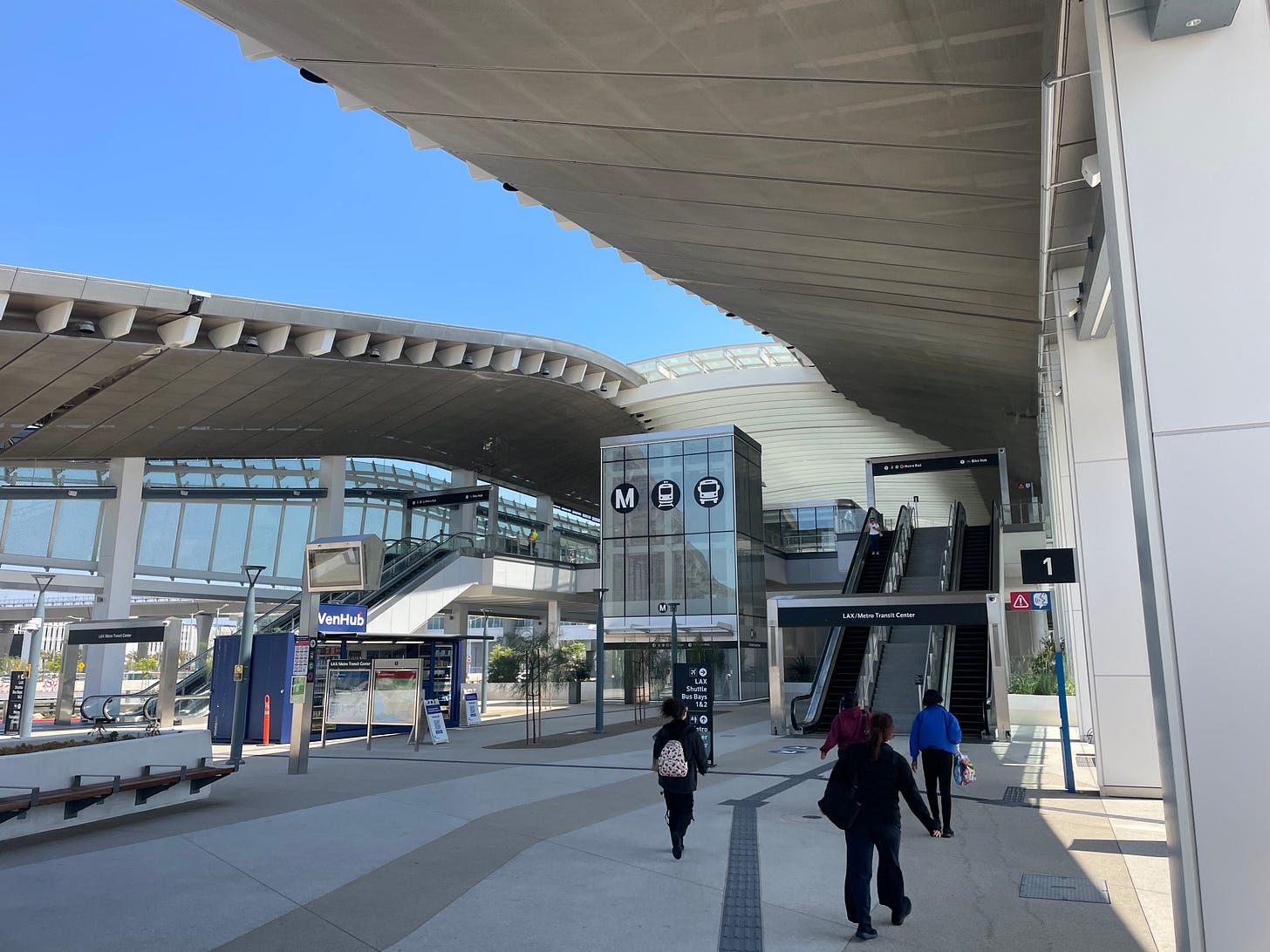
Upon arrival, the new Center was nice enough. I was actually expecting it to have more grandeur. LA-based politicians and transit enthusiasts were excited on social media. “This is more than a station. This is a statement that tells the world: LA is not just a car city. LA is connected. LA is forward-thinking and a world-class county,” wrote LA County Supervisor Janice Hahn on X.
One LA transit enthusiast, Joe Cohen, wrote in a Tweet that was all over my feed, “They built a generational piece of civic infrastructure.” Given this hype, I was excited to see it. I wanted to be excited. I wanted to join my fellow urbanists in their enthusiasm. It just did not hit me that way. The center was just underwhelming.
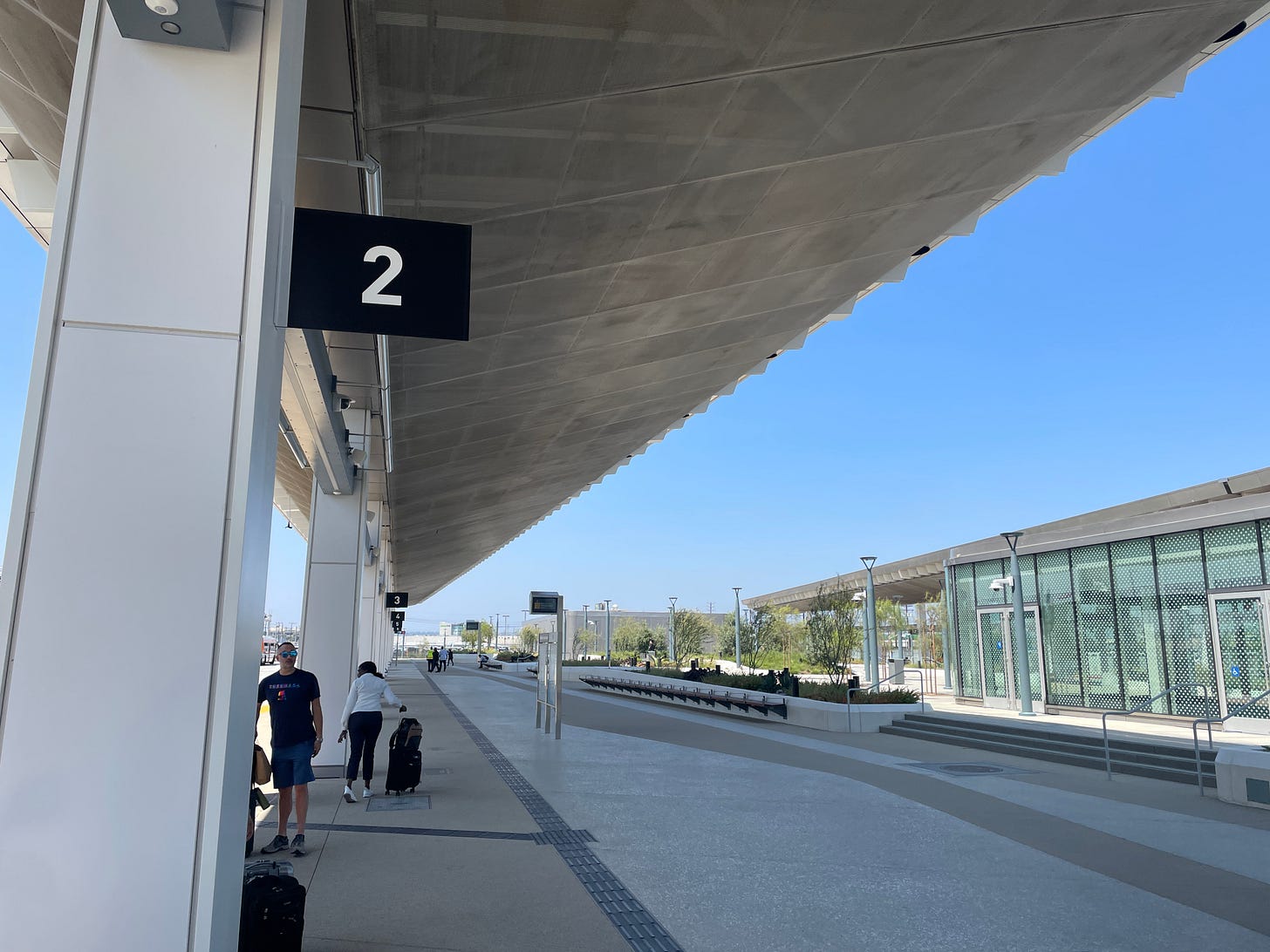
Don’t get me wrong, it’s a fine station. With a famous architectural designer, a price tag of $900 million, and social media hype, I was expecting a palace of public transit. I wanted a rail cathedral. I did not see that; instead, I saw a nice, fine station. Perhaps, because I had just landed from East Asia, I was grading more harshly, since their standard for stations is much higher (especially new construction).
Don’t get me wrong, it is a functional station. The signage and wayfinding were good enough. I didn’t notice any glaring omissions. Ticketing was simple (used Apple Wallet; at just $1.75, it’s a good deal). The headways were running reasonably well for the July 4th weekend (we had just missed the C train when I took this photo). I would expect them to be quicker on weekdays.
There were also staff everywhere who were helpful and friendly. I could tell that the leadership in LA really wants to make this work, given the manpower they have dedicated to it. And it does! But the potential of the transit center is held back by the realities of the city.
The Center and Surrounding Area
I took the C line to Norwalk that day. The train itself is pretty nice once you get on. They were certainly new carts, so they had not yet accumulated years of grime that is sometimes a staple of neglected public transit. I did notice a gross residue on the windows, which made for some gnarly imagery with the LA sprawlscape.
That’s the major problem with the LAX/Metro Transit Center: it’s surrounded by LA. The transit hub is not just going to fix a city, county, and region that has made 50 years’ worth of bad decisions around urbanism.
Right around the new Transit Center were pretty standard LA development patterns. Wide stroads, a lot of parking, and basic sprawl. There were the standard 5-over-1 developments that have become popular, with giant parking structures next door.
To be fair, this area was still fairly close to LAX near the Aviation stops (the next two beyond the new Center). Most places don’t usually have good urbanism around the airport, even in vaunted Seoul or Shanghai with ICN or PVG, respectively. So I can give somewhat of a pass here. Plus, there is clearly new development happening.
Moving Along Further Into Sprawl
The problems only exacerbated as the C train continued to Norwalk—that sprawl got worse, not better. The train basically runs along the highway, with little around except for massive roadways and car exhaust. Again, don’t get me wrong, I am glad there is finally a train line doing this, but it was a depressing reminder of how far LA and the region have to go.

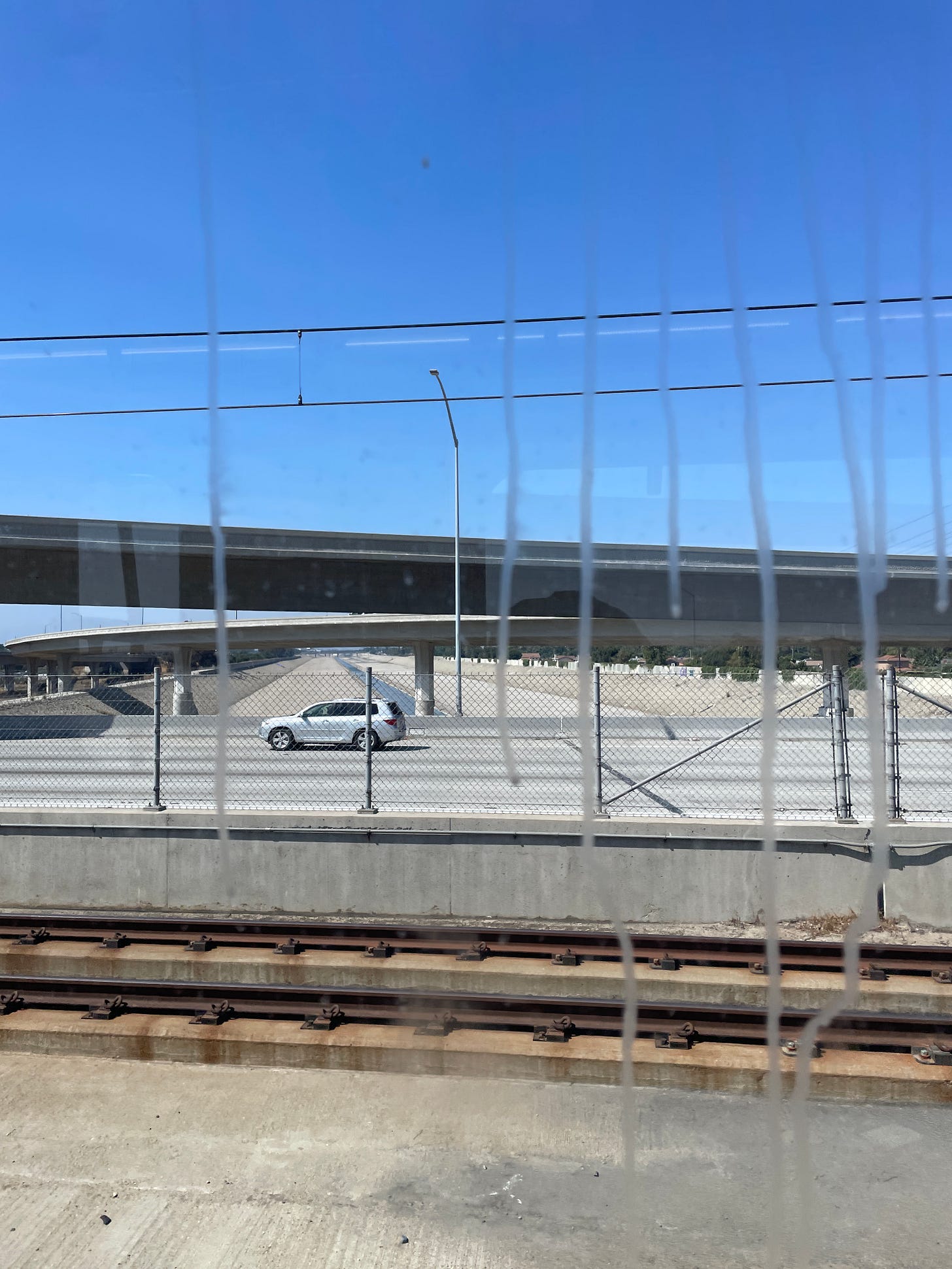
Massive LA Metroplex
Confession time: I don’t actually live in LA. I live in the far reaches of the LA metroplex down in South Orange County. I do this because it is near the university where I work, cutting down my daily commute to a few minutes. I would love to live more centrally, but as you can see from this account, the transit is impossible for daily riders and traffic is historically bad.
This means I am further away from the amenities that come with Los Angeles (like LAX or DTLA). I am truthfully now in between the centers of both LA and San Diego, which is nice to have access to both cities but still sort of no-man’s land.
That being said, I still try to use public transit down here in suburban Orange County. Often, I end up crashing and burning with those attempts to buck the car culture. This attempt at the new Transit Center was a similar failure. It becomes ever more frustrating on my returns from East Asia, too.
Missed Connection Transit
One of the major flaws of the new Transit Center is that there is no direct train line to Downtown LA (DTLA) and Union Station, which is the major train hub for the region. This means that anyone who wants to get to the center of the city and ride regional rail will have to transfer to a different line than the C or K, which adds another 30-45 minutes to the trip. This is a massive drawback that will scare a lot of potential riders away from public transit.
Because of this failure to connect the new Center to the center, it would have been way faster to simply take the Flyaway Bus to Union Station from LAX. This puts travellers right back into traffic. But I wanted to review the station and rail (to my wife’s annoyance). So we continued to the last stop on the C line at Norwalk.
The missed connection issue was exacerbated further at the final stop on the C line. For some reason, the Norwalk light rail station is almost three miles from the train station, which connects to the Orange County line. This kind of thoughtlessness is typical for Southern California.
When we got there, the station was literally in the middle of a highway (literally used correctly here). There was basically nothing else around, impossible to walk to the station, and annoying to bus there with all of our luggage. So we admitted defeat and got an Uber from where we were.
In the end, we had to take an Uber home. We had already been trying transit for an hour and a half and faced another 3 hours if we continued to a bus, to the Orange Line, then to likely an Uber at my station anyway. The last-mile problem here in Southern California is really more of a last 2.5-mile problem. Unfortunately, the local transit agency just ended the bus that serviced my area, which I have written about:
That trip ended up being about the same cost if we had just taken an Uber from LAX to begin with, over $100, but with the time and added transit fees ($1.75) on top. Roughly $100 is standard for getting to LAX from where we are in Orange County. But it seemed high from the station in Norwalk; it was during a major national holiday, though.
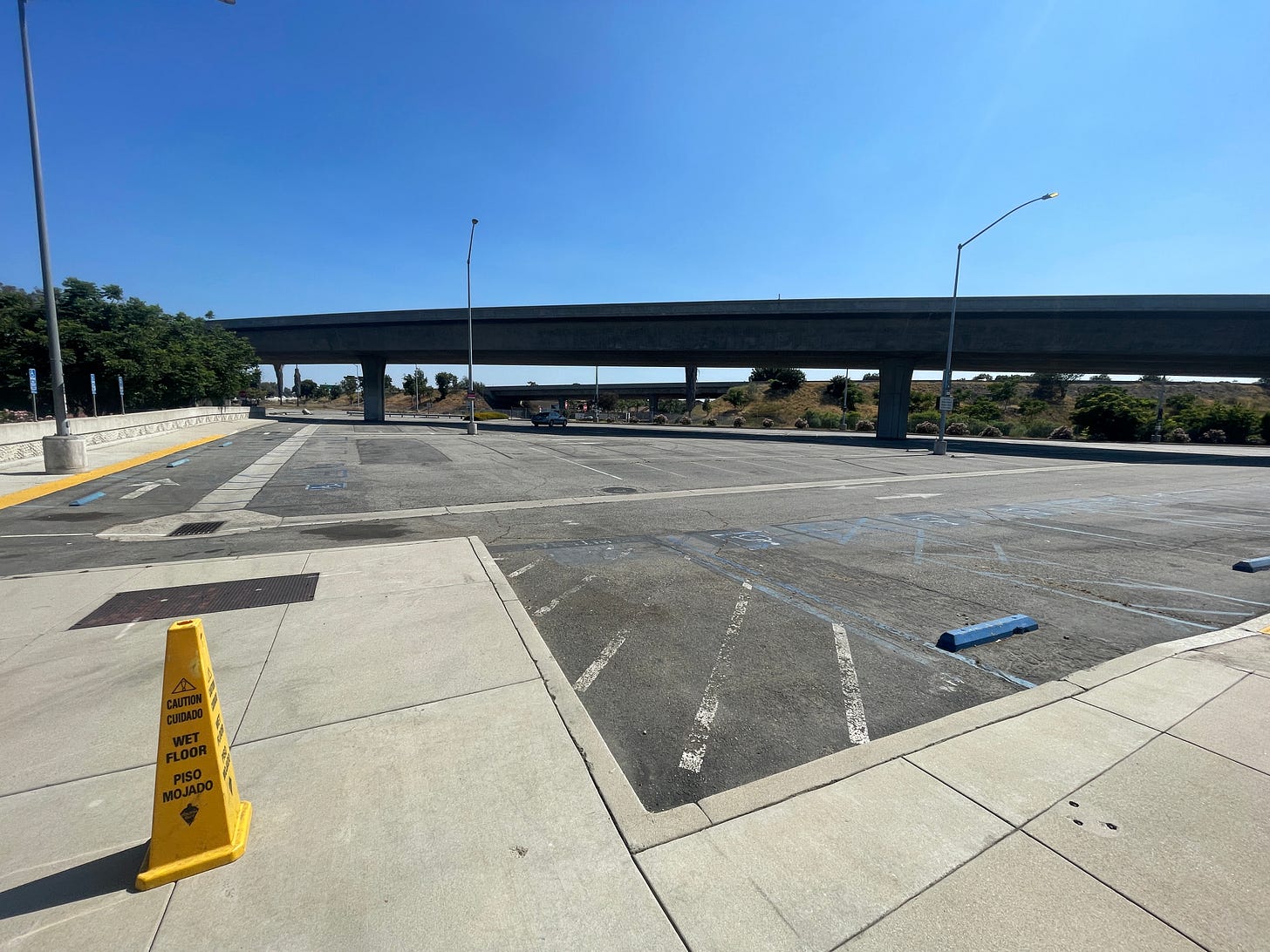
Final Grade: Incomplete.
I guess the question is: do I grade LA on how terrible things have been in terms of car-centric development in the past? In that case, this is a good step forward. We needed something like this for a very long time.
On the flipside, do we instead grade LA along with other global city standards? In that case, this is an utter embarrassment for a place that is supposed to host the World Cup and Olympic Games. The new Center is a couple of miles from the LAX terminals and none of the lines go directly to Union Station, the region’s main transit hub. Plus, all of this for almost a billion dollars.
All that being said, I do think that I will re-evaluate my grade once the People Mover is complete (scheduled in 2026 before the World Cup starts). As I mentioned earlier in the article, it is miserable driving to LAX. So if I have to drop off/ pick up a friend or family member, I am stuck in the Horseshoe of death. When the People Mover is functional, dropping people off at the new Center should be a better option.
This means that (some) traffic can be avoided eventually. But it also means that cars will still be a significant part of the commuting options to LAX. It is a good, needed step that is not perfect, yet I’m glad LA finally has it. At this time, though, the new LAX/Metro Transit Center is certainly not comparable to transit centers that other world-class cities have to offer.




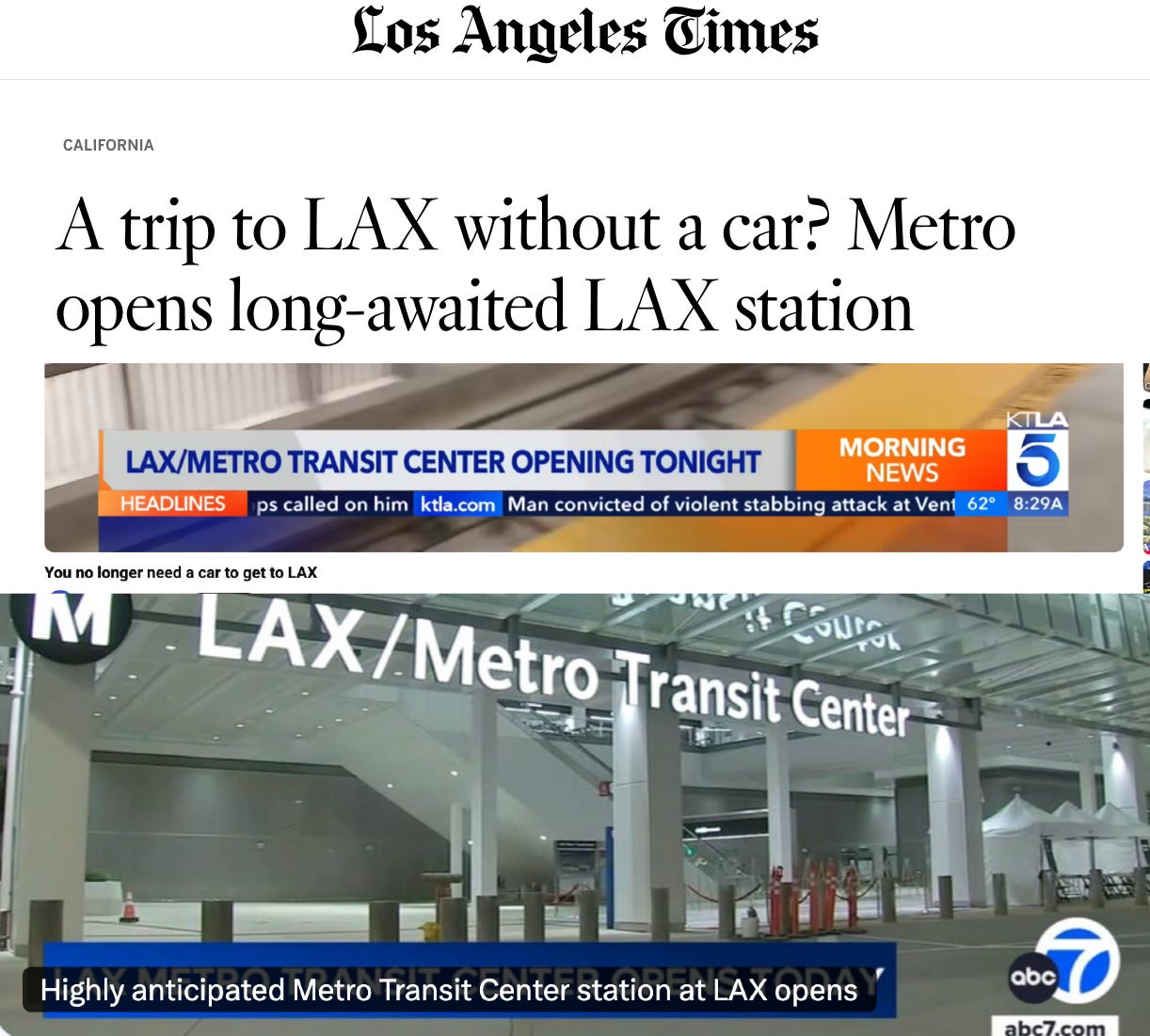
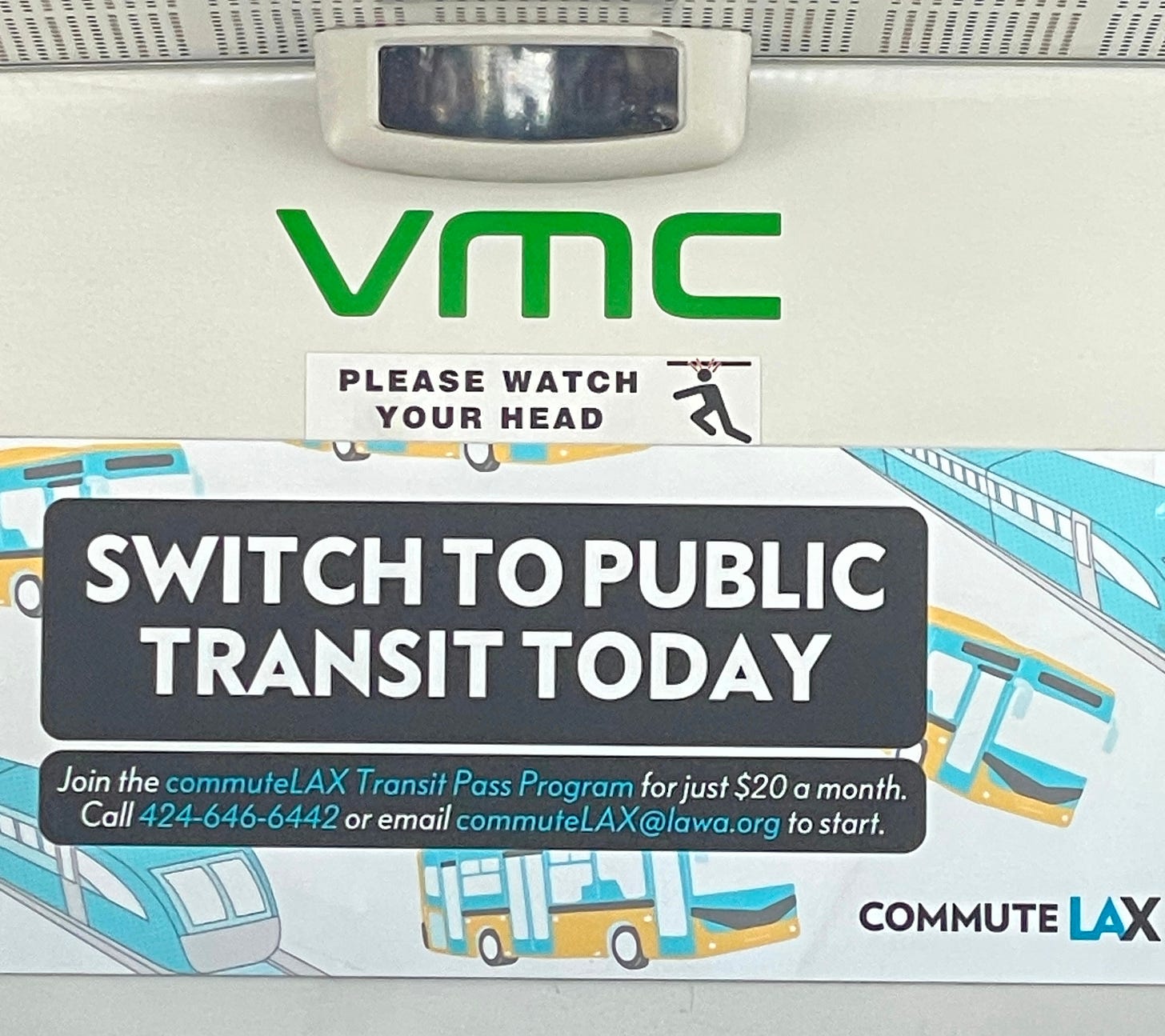
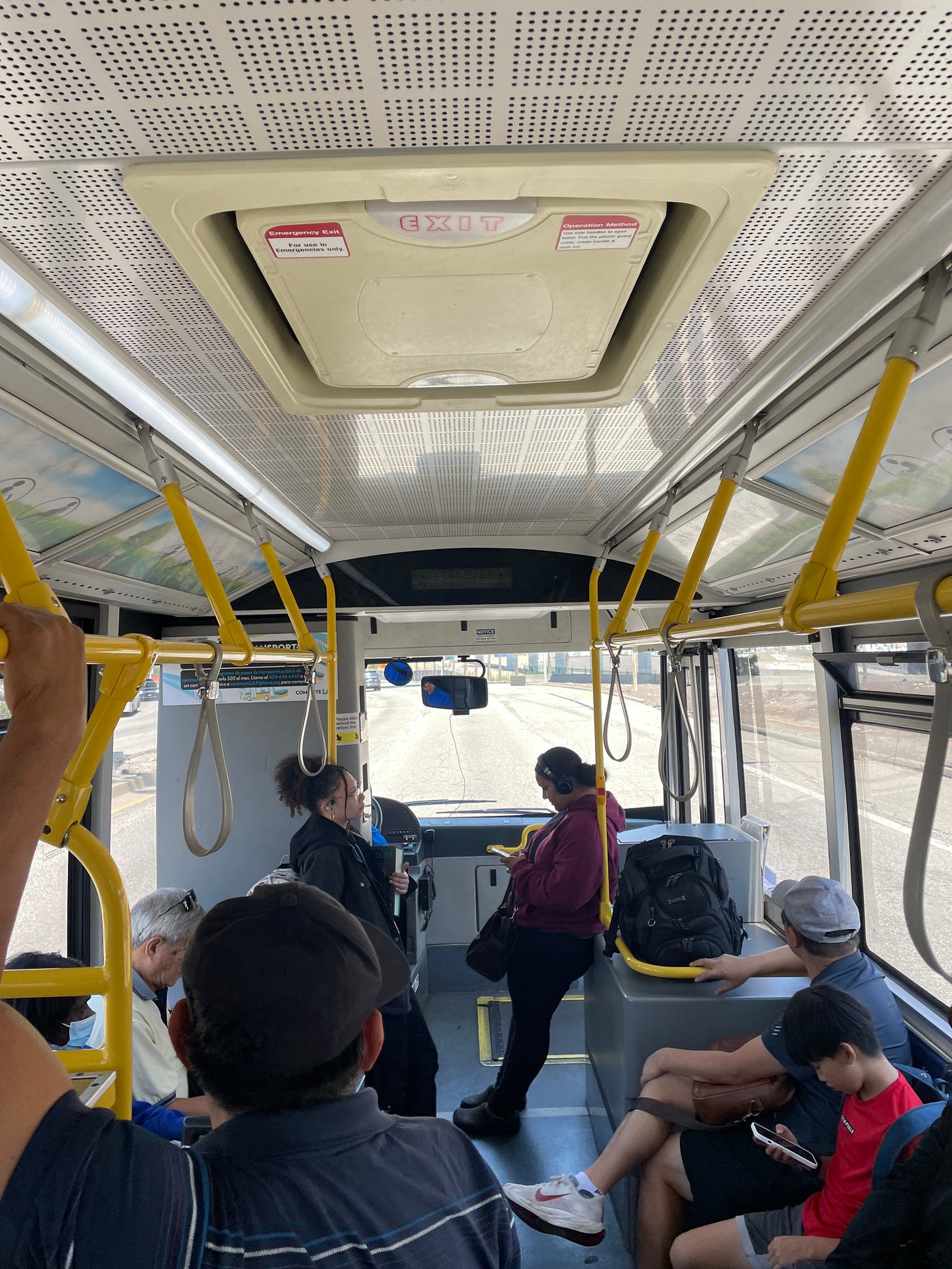
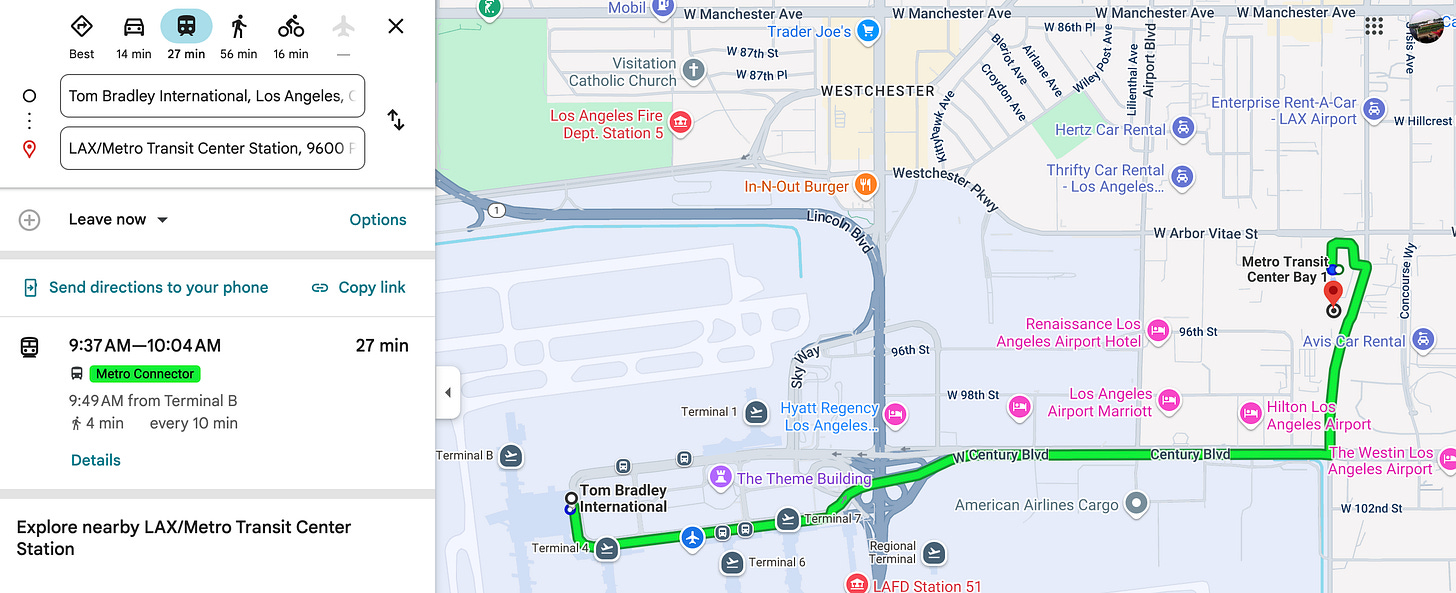
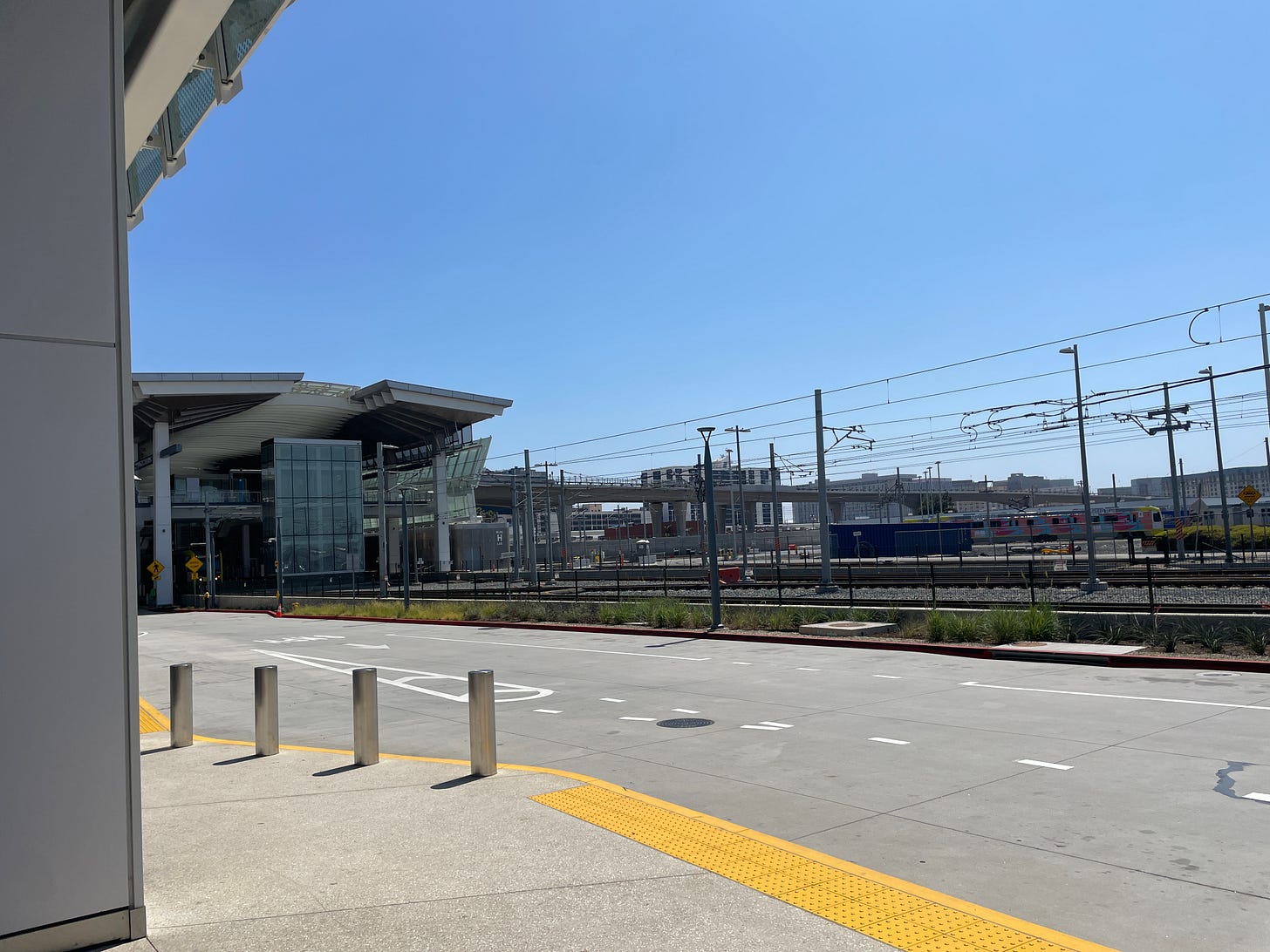
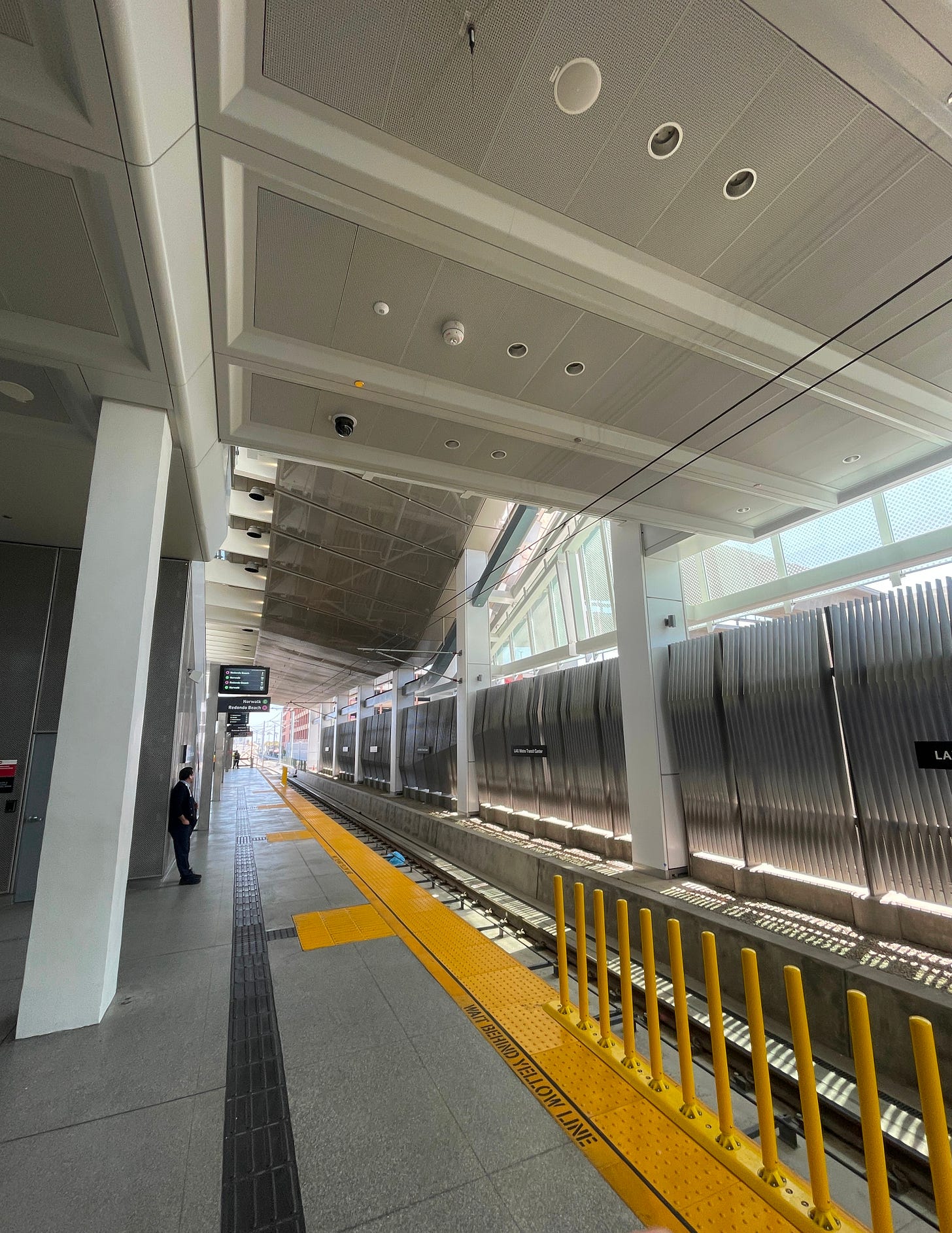
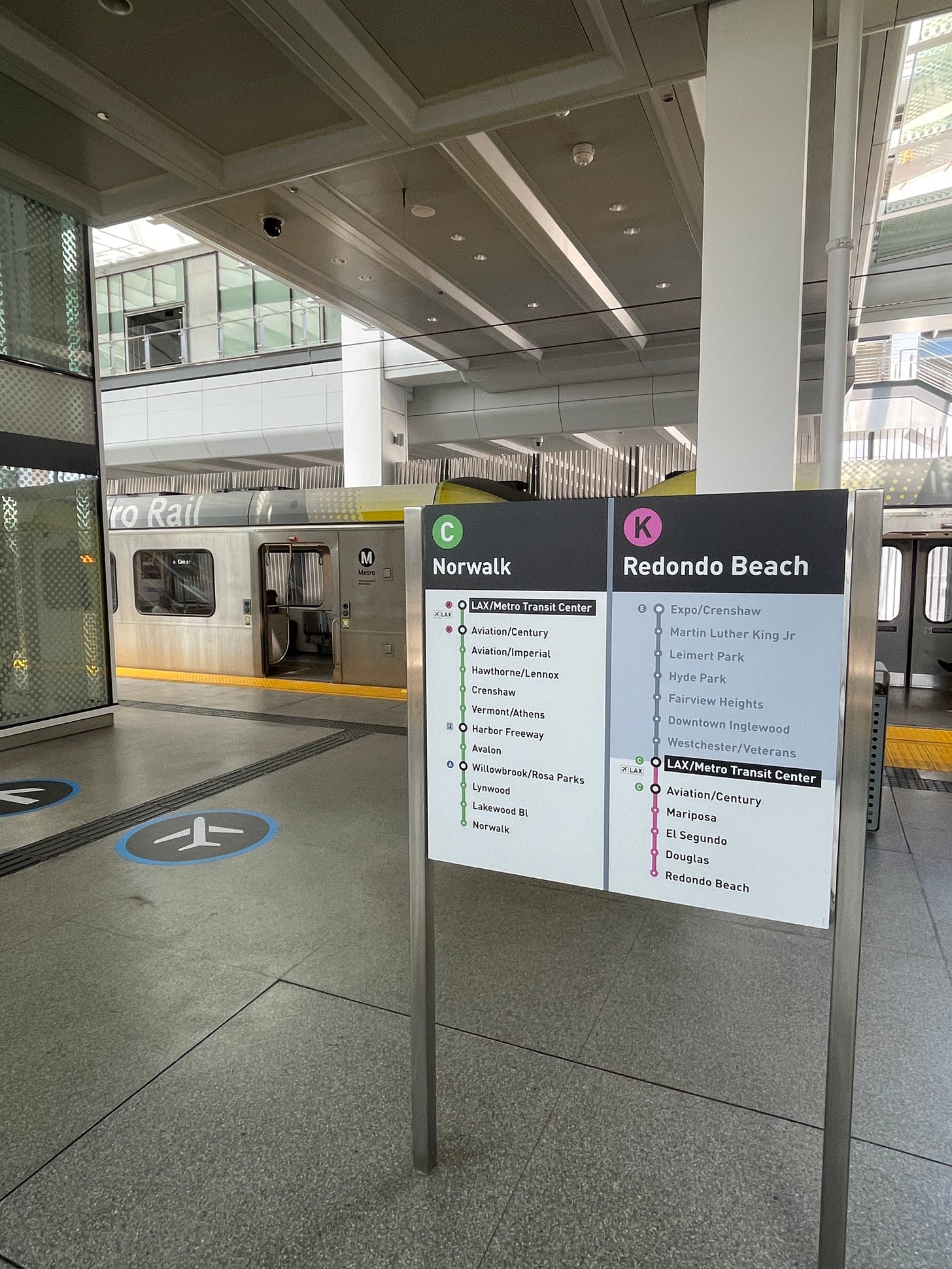
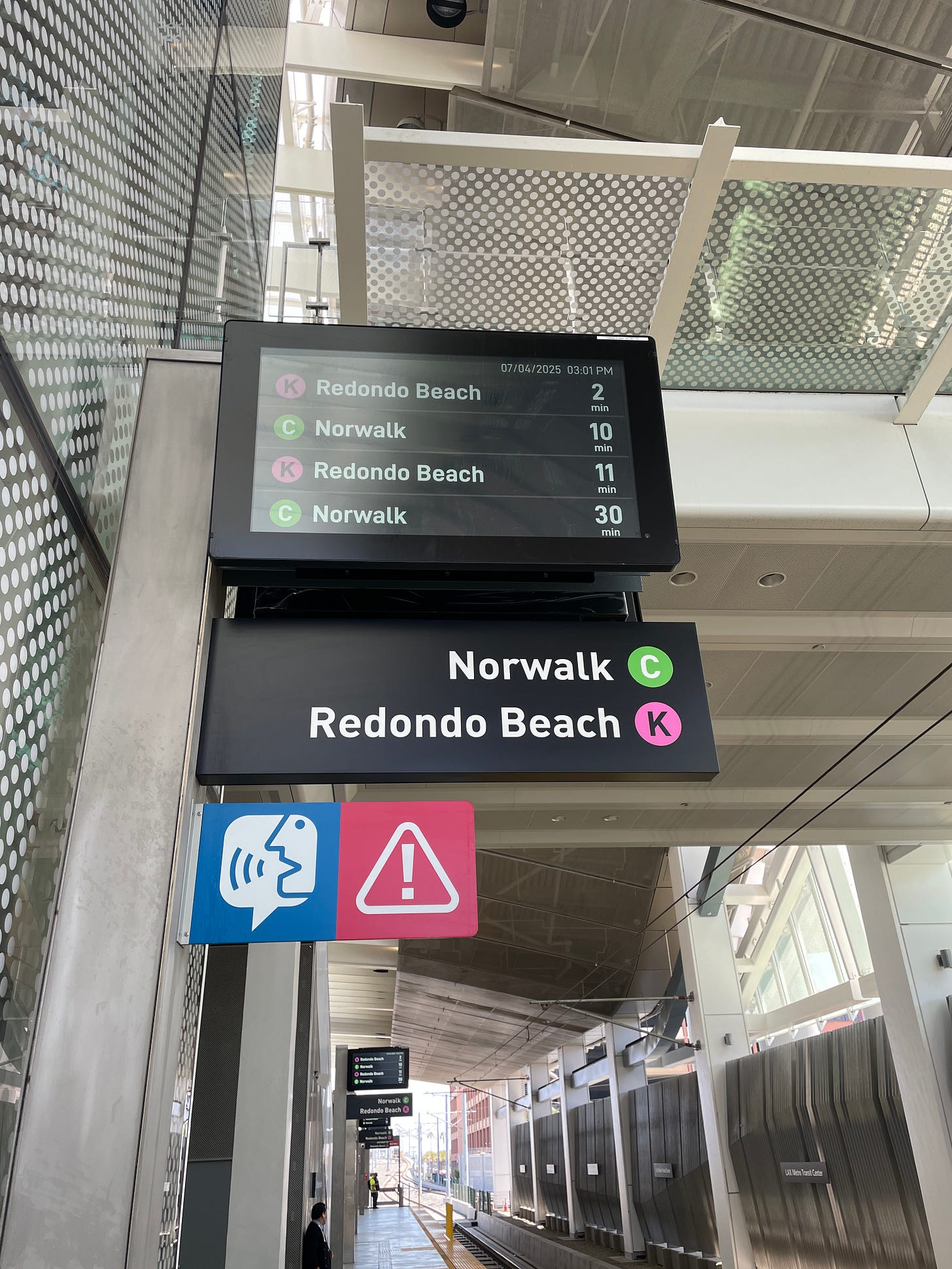
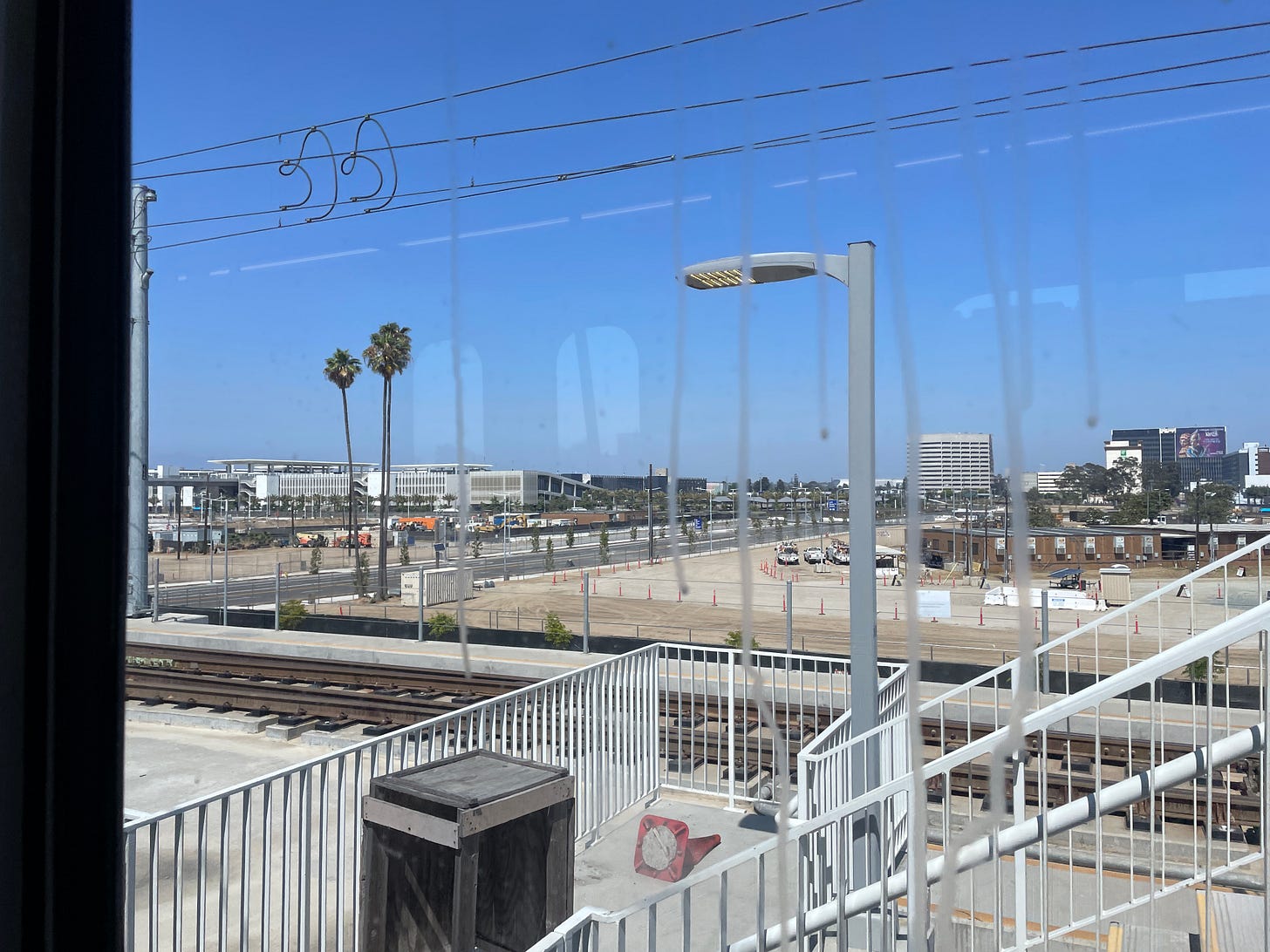
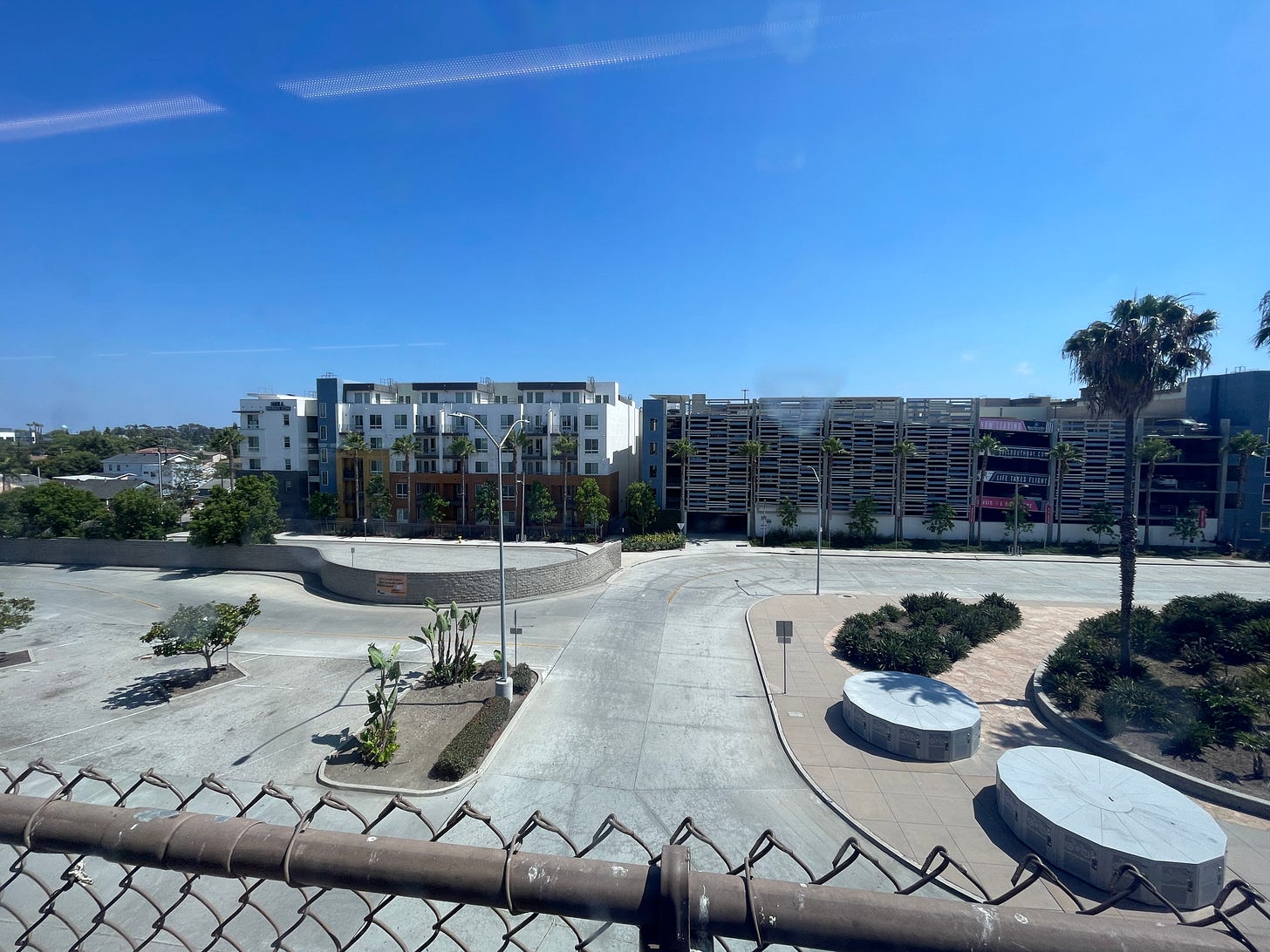
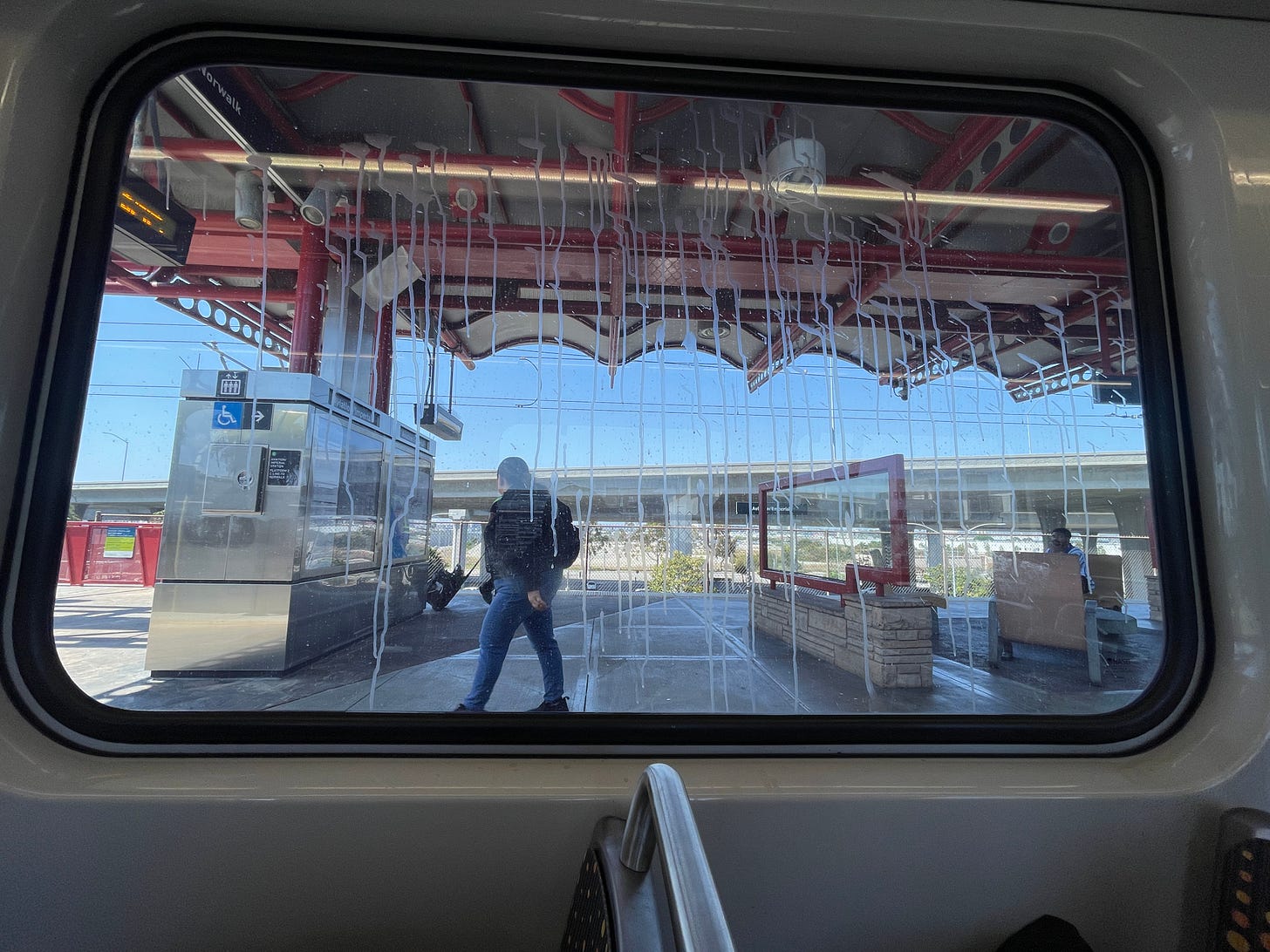
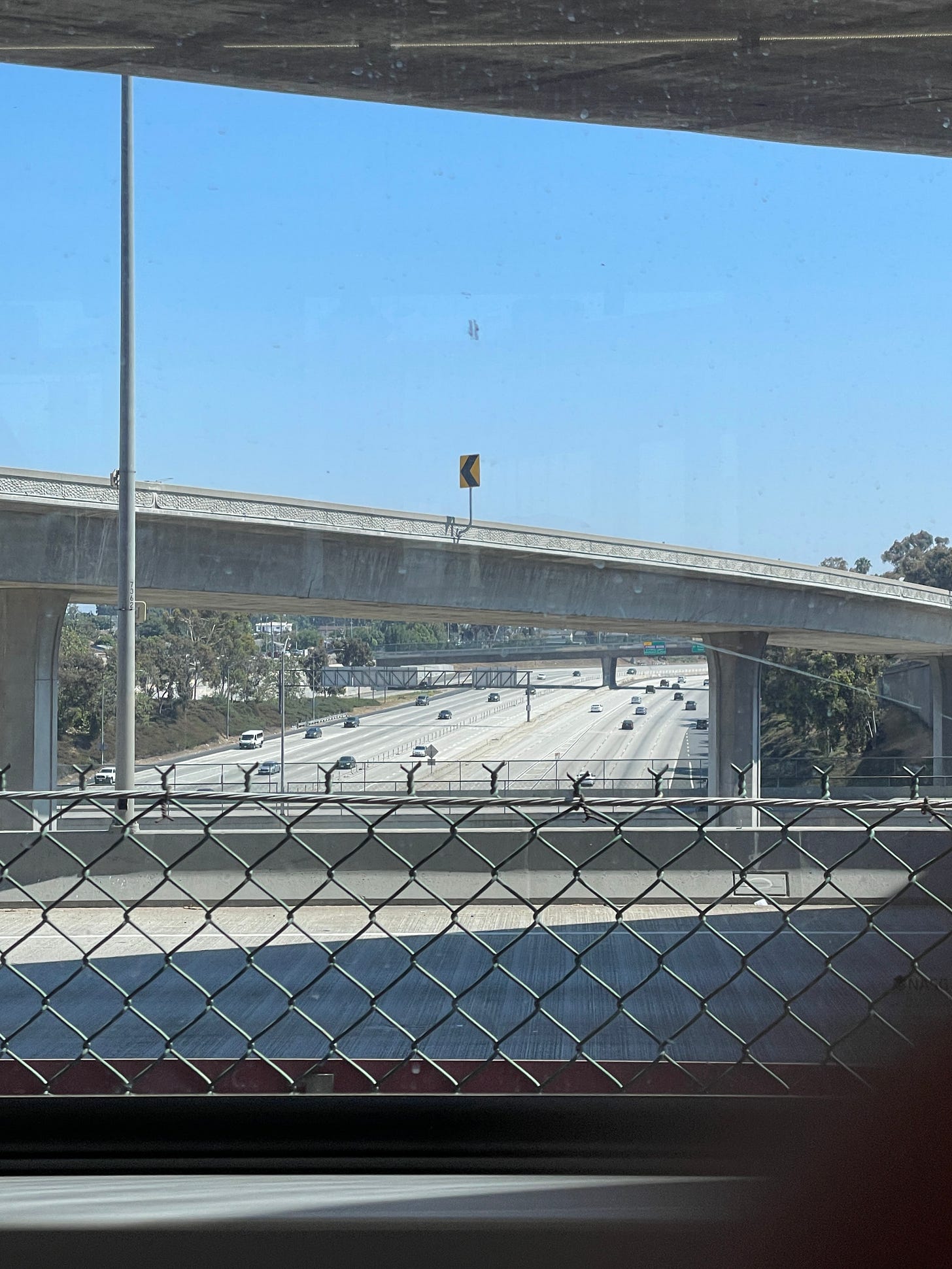
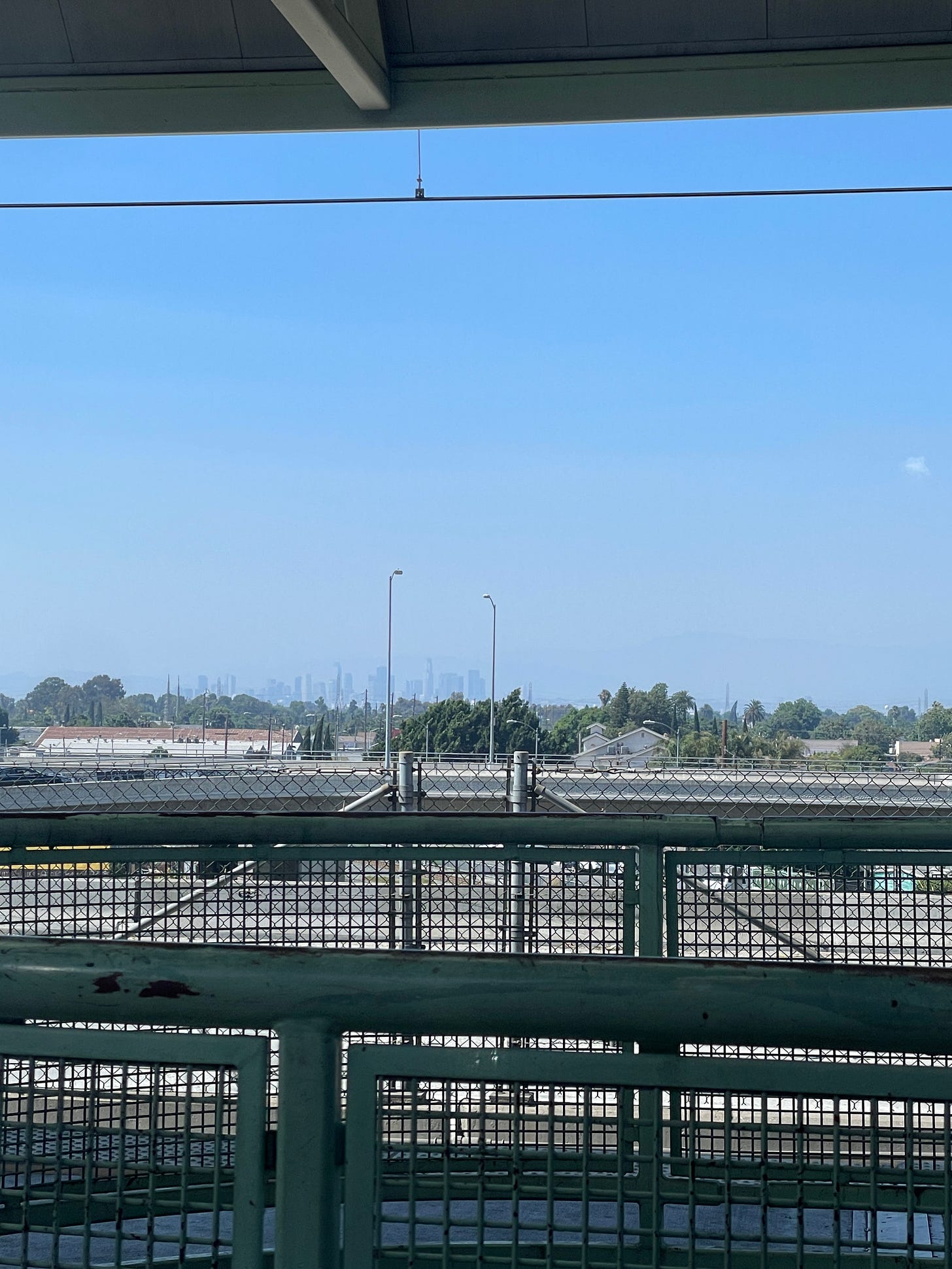

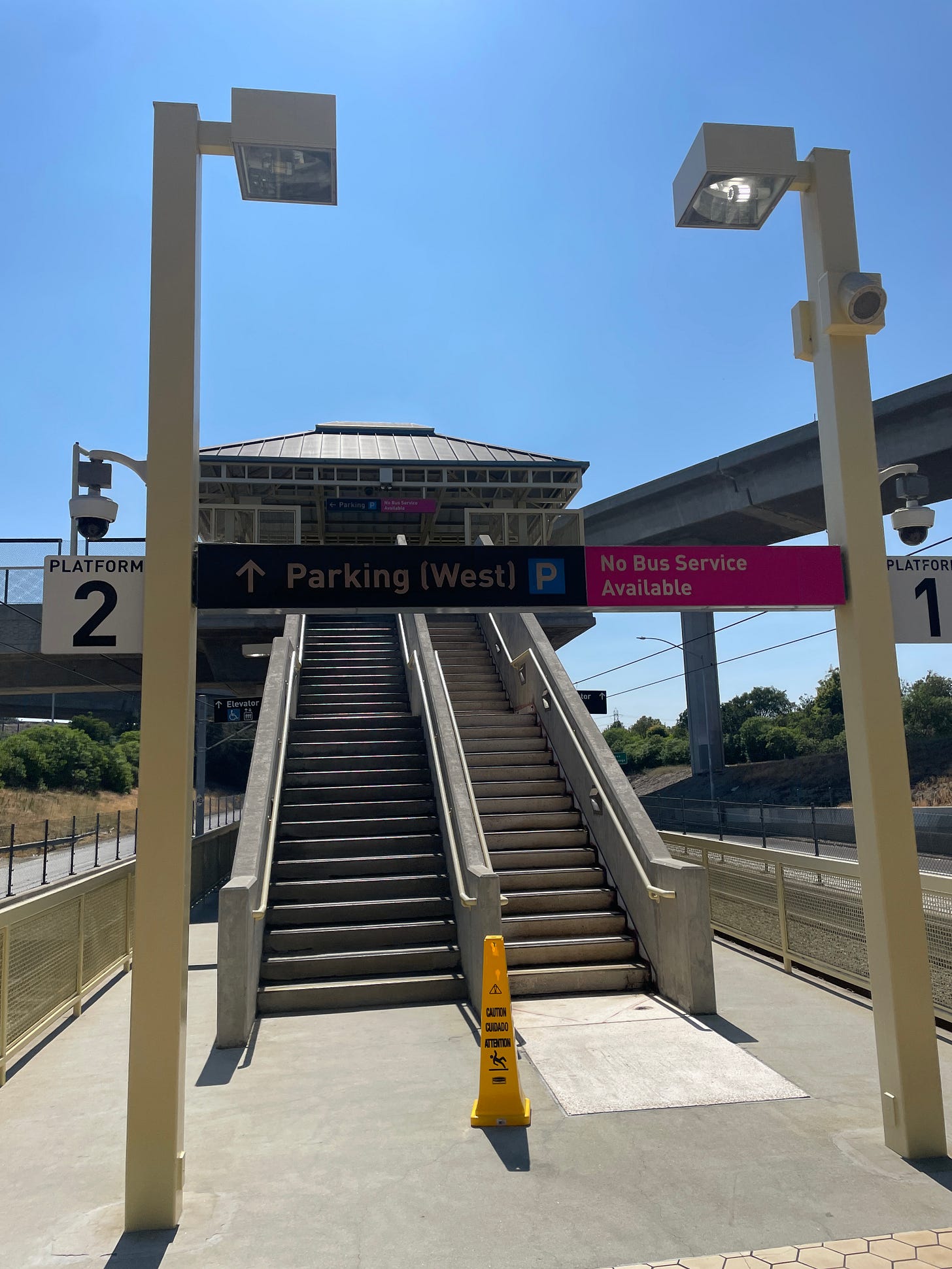
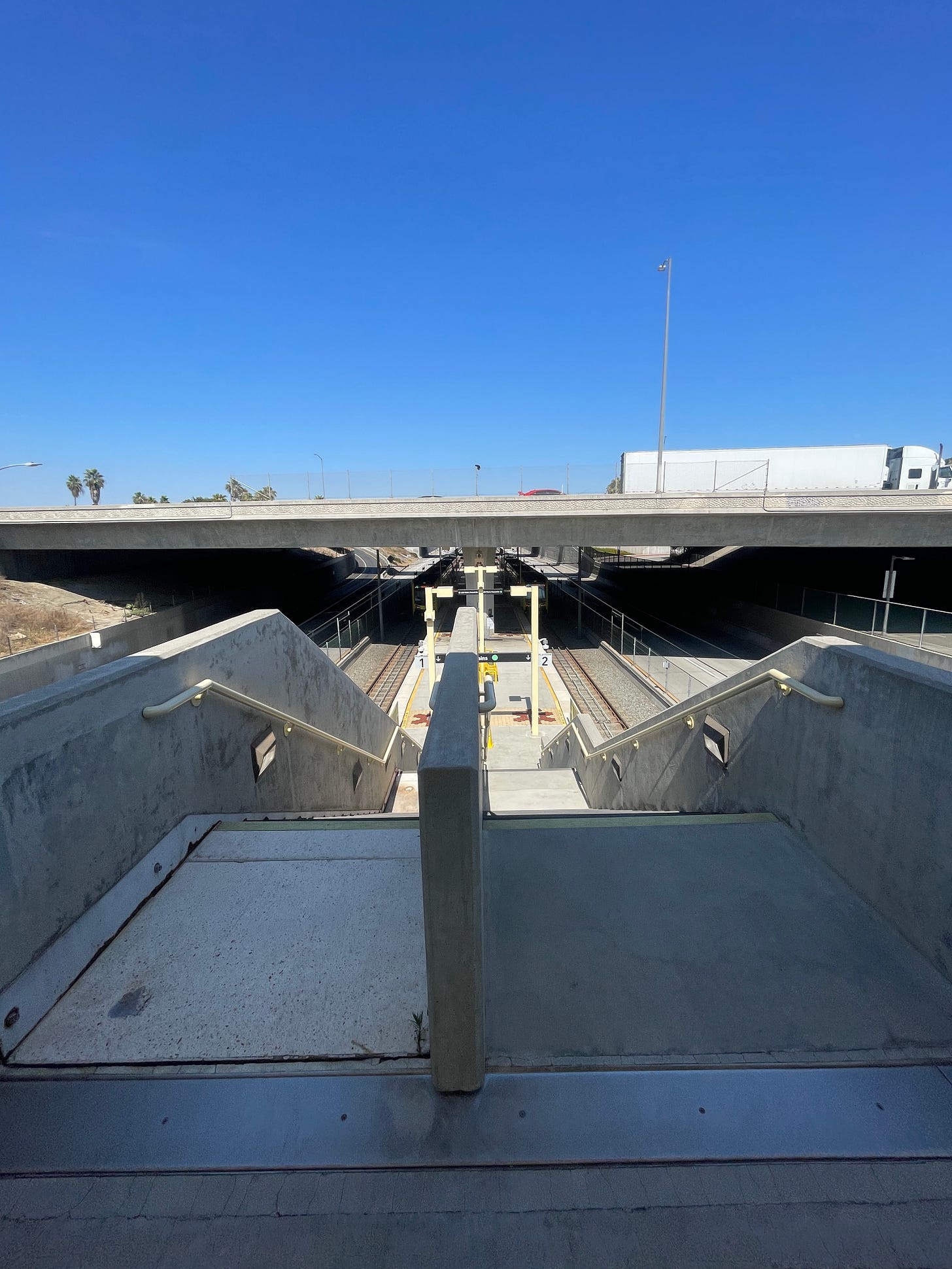
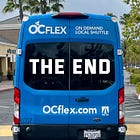
Kinda funny, I live in Norwalk CT so this kept throwing me.